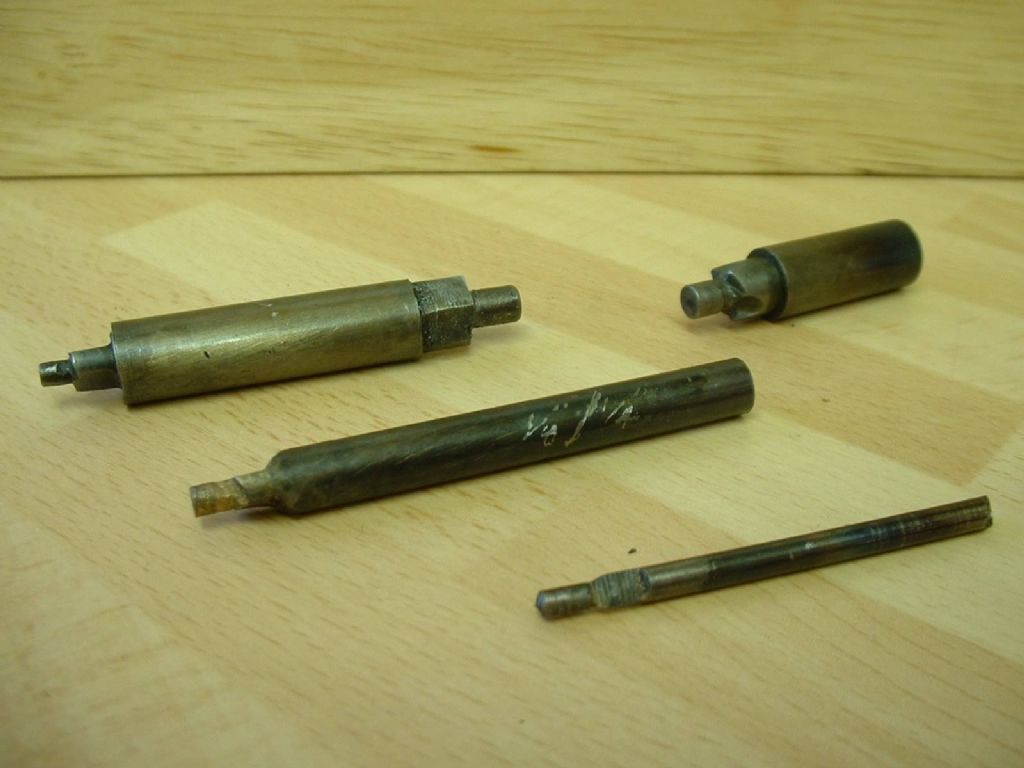A pin drill can still be quite useful, for instance where the hole to be counterbored would require a really long cutter to reach it. This can be the case for instance on some of the Stuart engine standards. They are dead easy to make, which also means they will be the size you want. The technique is to take a piece of silver steel the diameter and length you want. (or turn down a slightly bigger one). Drill the end with a hole the size of the pin you want, eg to be an easy fit in the hole to be counterbored. Now take a fine triangular file and file the cutting teeth in the end. This can be done by eye. Make sure you file them so they will cut with the correct rotation direction. The idea is to file the teeth such that the sloping back just meets the front cutting edge without leaving a flat and without taking anything off the height of the tooth. Work your way around until you have cut teeth all the way around. They probably will not be even but that is not a problem, it helps prevent chatter.
Next heat the business end with a torch by playing the heat back from the teeth a bit until the whole end is the colour of a boiled carrot. They used to say cherry red, but most cherries are not the right colour! Keep it at that temperature for a minute or so, then plunge the hot end into cold water. Now it should be very hard, and will also be brittle. You can check the hardness with a file, it should just skid on the surface. Don't drop it, it will be very brittle at this point. Use some wet and dry paper to polish off the blackening of the surface, then heat again a bit down from the teeth. You should be able to see colours start to run along the surface away from the flame in both directions. When the pale yellow (Light straw) colour reaches the cutting teeth plunge it in the water again. It should now be capable of cutting, so fit a pin into the hole and try it out. I have made quite a few of these and have used them on steel, cast iron, and aluminium with great success. They should not be run too fast as they are not high speed steel of course.
If you are not happy with the tempering, you can heat the whole thing up again and reharden it. I have never had to resharpen one, they only get very occasional use, but if you need to you can soften the whole thing by heating it up and then cooling very slowly. They used to leave them overnight in the ashes of a coal fire but most people don't have one of them anymore.
John
 Neil Wyatt.
Neil Wyatt.





